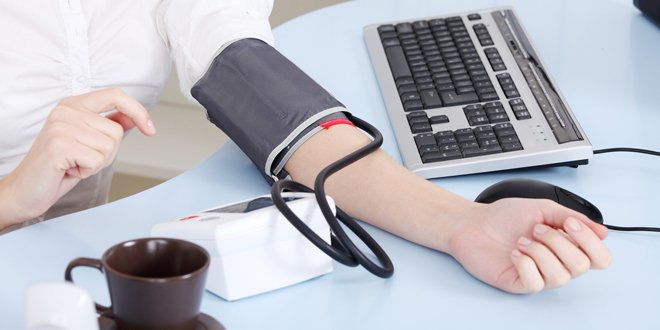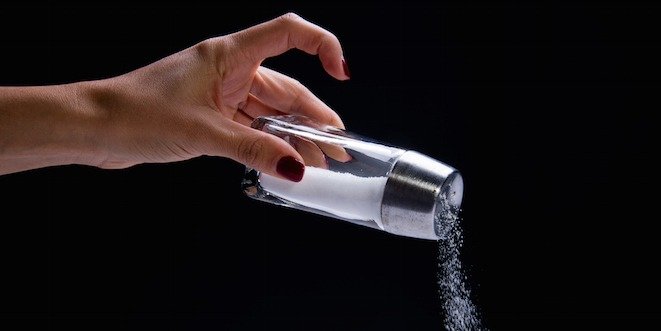
People with diabetes are at risk of high blood pressure (hypertension). In fact, they’re twice as likely to have high blood pressure levels than a person who doesn’t have the disease. That’s why it’s important to know your blood pressure targets and strive to reach them. Read on to learn more about blood pressure targets for people with diabetes.
What are the recommended target blood pressure levels for people with diabetes?
Blood pressure is a measurement of the force of your blood against the blood vessel walls. It is measured with two numbers:
- The first number measures systolic blood pressure, which is the pressure in your blood vessels as your heart beats and pumps blood
- The second number measures diastolic blood pressure, which is the pressure in your blood vessels as your heart relaxes and fills with blood.

The Diabetes Canada clinical practice guidelines recommend that people with diabetes should have a blood pressure level of less than 130/80 mm Hg. If you have diabetes, you should have your blood pressure checked every time you visit your healthcare team. If your blood pressure is higher than the recommended target, you should check it regularly using a home blood pressure monitor. You may also be able to check it at your local pharmacy.
How do you know if your home blood pressure reading is accurate?
Devices used to measure blood pressure at home can be purchased from pharmacies or stores that sell healthcare equipment. Blood pressure monitors that have a memory or printout for storing readings are recommended, as this allows your healthcare team to see the recent readings that have been taken.
It’s important that you know how to use a home blood pressure monitoring device correctly. Be sure to read the user manual carefully. You should also take the opportunity to have your pharmacist show you how to use the device; they can also help you select the proper cuff size and features, and make sure the readings will be accurate.
You may be surprised to learn that home blood pressure monitors, when used correctly, can provide a more accurate reading than those done at your healthcare professional’s office.
Check out these tips to ensure the accuracy of your blood pressure monitor:
- Always choose a cuff that goes around your upper arm, not around your wrist. Wrist cuffs generally give less accurate readings than arm cuffs.
- The size of the cuff is the most important feature to check when you’re selecting a blood pressure monitor. (The size relates to the circumference of your upper arm.) A cuff that doesn’t fit properly on your arm may give inaccurate readings.
- Avoid smartphone apps that claim to measure your blood pressure through your pulse rate. They have not been tested rigorously, and are often inaccurate.
- Take your home blood pressure monitor to your regular diabetes healthcare appointments once every year. Your healthcare team can check the accuracy of the monitor against the office monitor.
- Visit Hypertension Canada to confirm that your home blood pressure monitor has been validated to be accurate.
What is a dangerously high blood pressure reading?
If you have diabetes, any blood pressure reading higher than 130/80 mm Hg is cause to take action to lower it, through lifestyle changes and/or medications. Blood pressure levels higher than 180/120 mm Hg can be very dangerous, especially if they are accompanied by symptoms (see below). These situations require immediate care in the hospital, where fast-acting medicines are used to lower blood pressure.
Will you feel symptoms if your blood pressure is too high?
Many people with high blood pressure don’t have any symptoms at all. That’s why it is important to have your blood pressure tested regularly by you or your diabetes healthcare team. They can determine if your blood pressure levels are at or above target and take the necessary steps to help you lower them, if needed.
When blood pressure levels are very high, people may experience the following symptoms:
- Headache
- Shortness of breath
- Chest pain
- Tiredness
- Confusion
- Dizziness
- Weakness
- Numbness
- Blurred vision
- Decreased urine output
What can be done to prevent high blood pressure levels?
There are a number of steps you can take to control your blood pressure levels, including:
- Following a healthy diet
- Reducing your intake of salty foods
- Exercising regularly
- Ensuring that your blood sugar levels are well-controlled
- Staying at a healthy weight or losing extra weight, if needed
- Drinking alcohol in moderation: limit alcohol to 2 drinks per day, and no more than 14 drinks per week for men and 10 drinks per week for women
- Quitting smoking
What should you do if your blood pressure levels are higher than recommended?
The tips above for controlling or preventing high blood pressure also apply to its management. Eating healthy foods, following a low-salt diet, controlling blood sugars, losing weight if needed, exercising regularly, drinking alcohol in moderation and quitting smoking can all help you lower your blood pressure levels if they are too high.
Your diabetes healthcare team may also recommended medications to help lower your blood pressure. Common blood pressure medications include:
- Angiotensin converting enzyme inhibitors (ACE inhibitors)
- Angiotensin receptor blockers (ARBs)
- Beta blockers
- Calcium channel blockers
- Diuretics (“water pills”)
Your healthcare team can determine which medications are right for your individual situation. Many people with high blood pressure need two or more medications, together with lifestyle changes to lower their blood pressure.
There are many things you can do to manage your blood pressure. Healthy eating, physical activity, managing your weight and taking your medications exactly as prescribed can all help ensure that your blood pressure is well-controlled.




